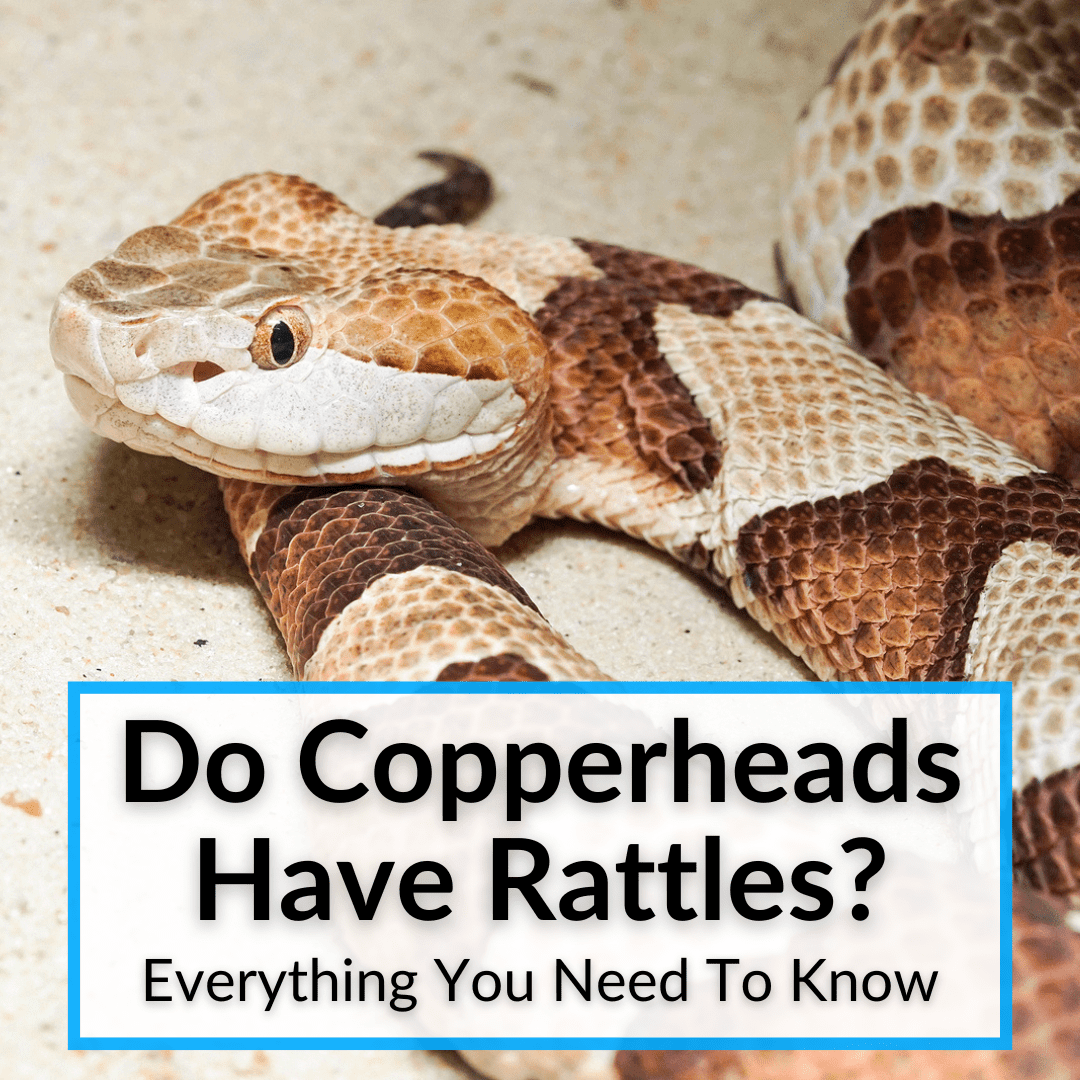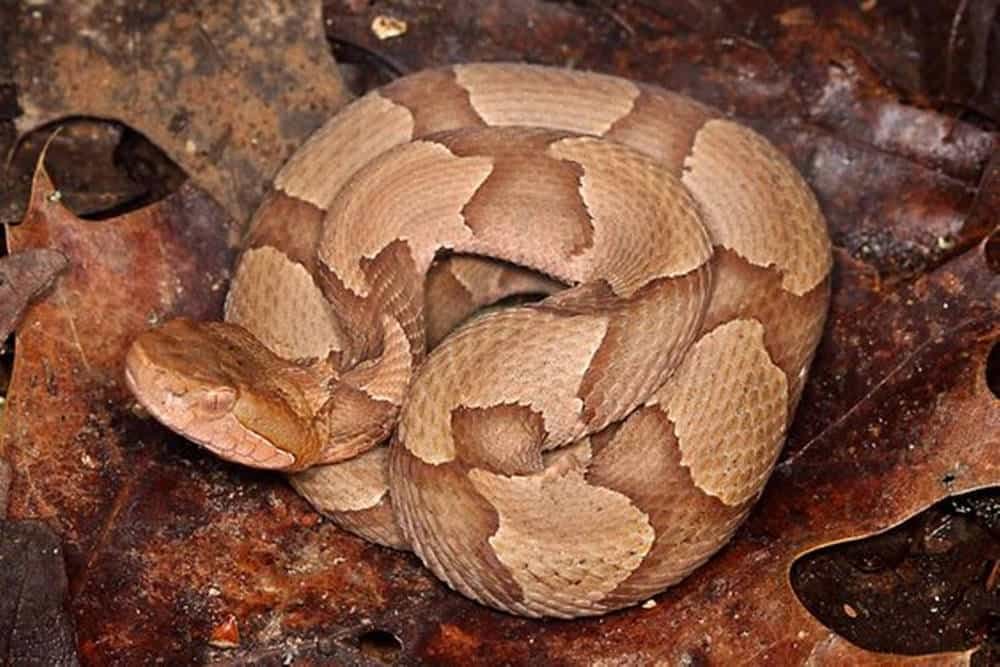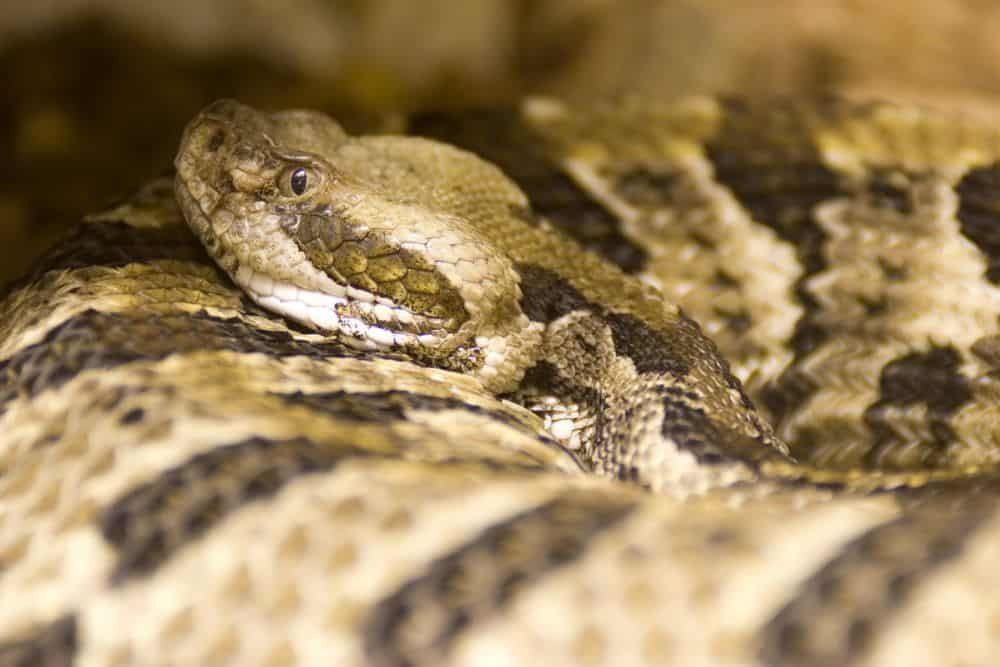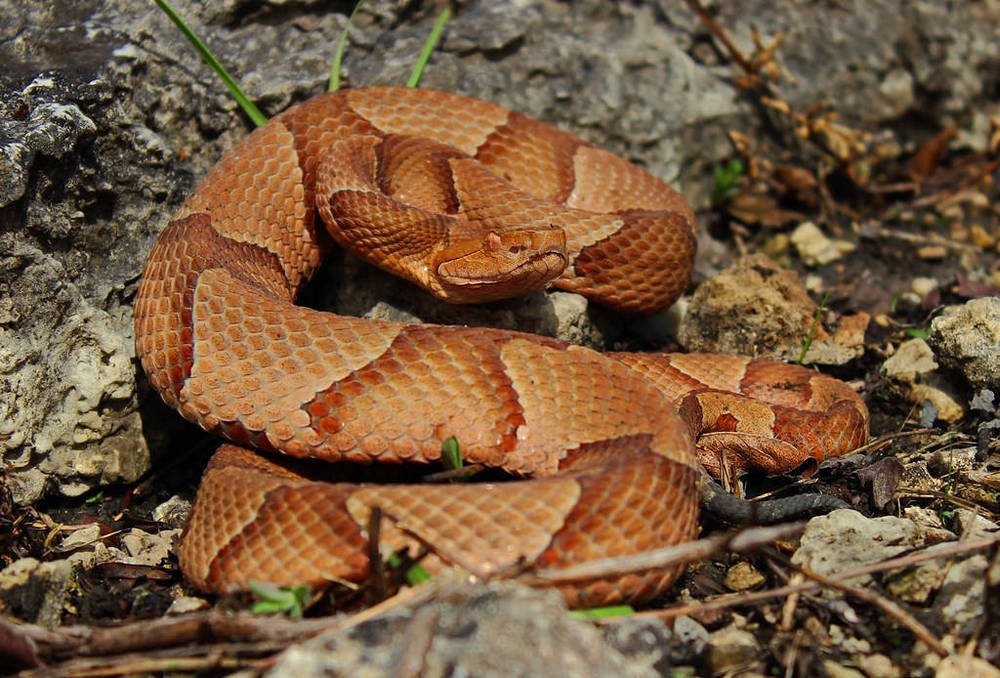
If so, you may have noticed a common behavior of theirs whenever they feel threatened.
Copperheads will shake their tails to warn off potential threats, just like rattlesnakes do.
Do copperheads have rattles on the ends of their tails, too, then?
Or are they simply shaking a regular tail and not making any noise?
Keep reading to learn whether copperheads have rattles at the end of their tails like rattlesnakes, along with everything you need to know about their tail shaking behavior.
Table of Contents
Do Copperheads Have Rattles?
Copperheads do not have rattles. They may look similar to a rattlesnake in other ways, but the missing rattle is always an easy way to tell the two snake species apart.
Despite not having rattles, they do shake their tails to warn off predators. Why do they do this, when their tails don’t even make any noise? We will talk about that below. Let’s begin by looking at the main differences between copperheads and rattlesnakes, apart from the missing rattle.
Copperheads Vs Rattlesnakes

The main difference between a copperhead and a rattlesnake is the size of both snakes. The maximum length a copperhead will grow to is four feet long, while a rattlesnake can grow up to a huge eight feet long.
The copperhead gets its name from its coloring. They are usually a brownish-tan color that resembles copper, with an hourglass-shaped pattern running down their body in a darker color.
A rattlesnake’s coloring varies greatly, since there are many different types of rattlesnakes. The color depends on the type of rattlesnake and its habitat.
For example, rattlesnakes in the desert may have similar colorings to the copperhead, while rattlesnakes in a grassy plain may appear greyer.
Another way you’ll know if you’ve bumped into a copperhead rather than a rattlesnake is from the location where you encounter the snake. You’re more likely to find copperheads in Northern America, Central America, woodlands, mountains and populated areas.
A rattlesnake is more likely to be found in North, central and south America in deserts, mountains or long grass terrain.
Even though both snakes may have different appearances, they do have similar behaviors. Both types of snakes like to avoid humans and prefer to be left alone.
The rattlesnake’s venom can be more dangerous than the copperhead’s, but this does depend on the rattlesnake species. Both snakes also lift and shake their tail to warn predators. The only difference is that rattlesnakes have a rattle, so their tails make a noise.
The copperhead, like many other species, likes to copy what the rattlesnake does when it feels threatened. That is why they shake their tails as a warning sign, telling you not to come any closer because they may just strike!
The copperhead’s diet also varies a bit more than the rattlesnake’s. The copperhead eats a larger variety of prey, due to the different environments the species occupies.
A copperhead will prey on insects, lizards, mice, shrews, chipmunks and bats. A rattlesnake is more likely to go for rats, mice, lizards and frogs.
What Is The Most Common Rattlesnake?

There are believed to be over 50 different species of rattlesnakes, but with scientists constantly carrying out genetic testing, this number keeps growing and growing.
Over 20 species are found in North America, with the most common being the timber rattlesnake. It is extremely venomous, but luckily for us, it is less likely to bite humans than other rattlesnakes, if you get too close. They will do their best to warn you off with their rattles, before they even think about striking.
How Do You Know If A Copperhead Is Near
The easiest way to tell if a copperhead is around is by what it looks like. It’ll have darker, diamond-shaped markings running down its body. These markings go all around its body, making it look as though they are touching the ground, which isn’t common with other snakes.
They also have diamond-shaped heads and their eyes are similar to a cat’s. Of course, you might not want to get too close to a copperhead’s face to try and recognize these characteristics. The further away you can stay, the better for you!
If you come across a copperhead in your yard or while out walking, I recommend staying as far away as possible. If there’s one in your yard, it may be worth having a professional remove it.
Then you can put up preventative measures, like a fence or spreading snake repellent, to ensure no more come slithering in. If you’re out walking, try to turn back and make a loop around the snake, leaving at least six feet (2 meters) between you and the snake when walking around it. More is better.
Do Copperhead Snakes Rattle Their Tails?

Yes, copperhead snakes do rattle their tails. Well, more accurately, they shake their tails, since they do not have rattles. As mentioned above, they imitate this rattlesnake behavior to warn away potential threats, despite not having rattles and not being able to make the distinct warning noise of the rattlesnake.
Do Copperhead Snakes Have Rattles: Final Thoughts
Copperhead snakes do not have rattles on the end of their tails. But that does not stop them from shaking their tails like rattlesnakes to warn off predators. They seem to be taking advantage of the rattlesnake’s dangerous reputation to help keep themselves safe.
Copperheads may not be quite as dangerous as rattlesnakes, but they are still venomous snakes that can cause you a lot of pain. And potentially even kill you. So if they want to warn you with a rattleless shaking of the tail, take it as intended. Be warned and avoid the snake.
Leave a Reply